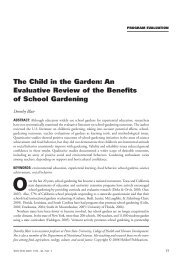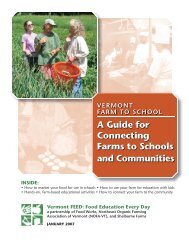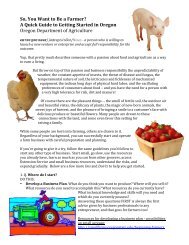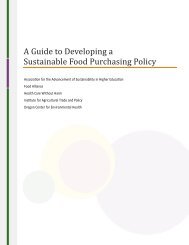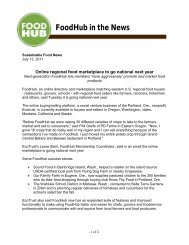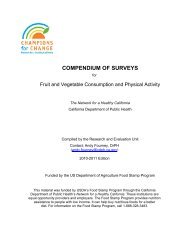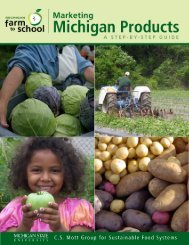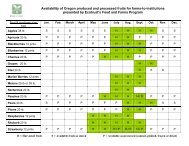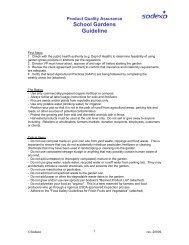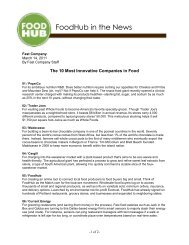eval report cover.indd - New Jersey Farm to School Network Wiki
eval report cover.indd - New Jersey Farm to School Network Wiki
eval report cover.indd - New Jersey Farm to School Network Wiki
You also want an ePaper? Increase the reach of your titles
YUMPU automatically turns print PDFs into web optimized ePapers that Google loves.
Sample <strong>School</strong> Wellness Policy (Page 2 of 4)10. Serve meals in a pleasant environment with sufficient time for eating, while fosteringgood manners and respect for fellow students.11. Maximize the reduction of waste by recycling, reusing, composting and purchasingrecycled products. Each school site shall have a recycling program.12. Ensure that a full service kitchen will be installed at school sites where public bondmoney is expended <strong>to</strong> repair or remodel a school.StrategiesA. Integration in<strong>to</strong> the Curriculum1. Integrate eating experiences, gardens, and nutrition education in<strong>to</strong> the curriculumfor math, science, social studies and language arts at all grade levels.2. Establish a school garden in every school. Give students the opportunity <strong>to</strong>plant, harvest, prepare, cook and eat food they have grown.3. Establish relationships with local farms. Encourage farmers and farm workers<strong>to</strong> come <strong>to</strong> the school classroom and arrange for students <strong>to</strong> visit farms.B. Student Participation1. Solicit student preferences in planning menus and snacks through annualfocus groups, surveys, and taste tests of new foods and recipes.2. Ensure that 5 students are represented on the Child Nutrition Advisory Committee.C. Waste Reduction1. Ensure that cafeterias are part of the environmental education of students andstaff through reducing waste, composting, recycling and purchasing recycledmaterial.<strong>Farm</strong> Conclusions <strong>to</strong> <strong>School</strong> and Sample RecommendationsTools and ResourcesD. Sustainable Agriculture1. Purchase food from school gardens and local farmers as a first priority, basedon availability and acceptability. Child Nutrition Services will coordinate itsmenus with school garden production and provide <strong>to</strong> garden coordina<strong>to</strong>rs a lis<strong>to</strong>f the produce it wishes <strong>to</strong> purchase.2. Work with the Alameda County Cooperative Bid (13 school districts) <strong>to</strong> increasethe amount of products purchased from local farms and organic foodsuppliers.E. Nutrition Education and Professional Development1. Provide regular professional development <strong>to</strong> enable the Food Services Staff<strong>to</strong>become full partners in providing excellent food for our students.www.farm<strong>to</strong>school.org 167



